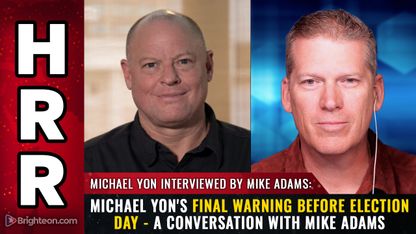
New South Wales (NSW) Premier Dominic Perrottet believes it is time for Australia to rethink its current Wuhan coronavirus (COVID-19) restrictions, such as mandatory quarantine. Perrottet told Sky News Australia that he would like to see the compulsory isolation period for COVID-19 be scrapped entirely "as soon as possible."
"The state should not be enforcing these orders at this time in the pandemic," Perrottet said. "I believe we need to move away from public health orders to a system in which we'll respect each other. If you're sick, you stay at home. If you're not sick, go to work."
Dr. John Gerrard, chief health officer of Australia's Queensland state, concurred with the NSW premier. He said the community could not remain on heightened alert forever.
"People are tired. We cannot continue to treat this as an emergency," he said. "It just doesn't work, [and] they'll just stop listening."
"We need a different way of thinking about [the pandemic], a different way of approaching our messaging about this pandemic. The future is not with directions, mandates and legal enforcement. [It] is with people modifying their behavior naturally, particularly when we see waves of transmission coming." (Related: Top NSW doctor wants to bring back COVID restrictions as cases continue to soar in highly vaccinated Australia.)
The remarks by Perrottet and Gerrard came as Canberra agreed to reduce the COVID-19 isolation period from seven days to five days. Australia's National Cabinet – made up of Prime Minister Anthony Albanese and chief executives of the country's seven states and territories – announced the decision on Aug. 31. The shortened isolation period is set to take effect on Sept. 9.
The prime minister called the move "a necessary change," adding that people should be able to return to work if they don't feel sick after the five-day period. "It is, on the balance of where we're at, a necessary change to take place and one that was supported by all states and territories," said Albanese, who replaced his predecessor Scott Morrison in May 2022.
Jason Clare, the federal education minister, agreed with Albanese on the "right decision" to shorten mandatory COVID-19 quarantine. "Most Aussies would say this is the right call at this time in the pandemic, it's been going for about [two and a half] years," he told the Seven Network.
CDC rescinds quarantine, distancing guidelines
In the U.S., the Centers for Disease Control and Prevention (CDC) also walked back its COVID-19 guidelines regarding physical distancing and quarantine.
The public health agency's earlier guidelines stated that people not up-to-date on the COVID-19 vaccinations who come into close contact with a COVID-positive individual should stay home for at least five days. But under the revised recommendations, home quarantine is no longer necessary. Instead, close contacts of COVID-positive persons should wear a high-quality face mask for 10 days and get tested after five.
COVID-positive people, meanwhile, should isolate from others for at least five days regardless of their vaccination status. However, the CDC advised that people can end isolation if they are asymptomatic and fever-free for 24 hours without the use of medication, or if their symptoms are improving.
The CDC's new guidance also extended to schools, in the form of the "test-to-stay" recommendation being dropped. Under the system, students exposed to COVID-19 could regularly test instead of isolating at home in order to continue attending in-person learning. With the quarantine guidance being repealed, the testing option also disappeared.
Moreover, the CDC noted that people no longer need to stay at least six feet away from others. It also ended the recommendation for schools to do COVID-19 testing daily.
According to officials at the public health agency, the changes stemmed from a recognition that an estimated 95 percent of Americans aged 16 and up have acquired some level of immunity – either from prior infections or the vaccines.
"The current conditions of this pandemic are very different from those of the last two years,” said Greta Massetti, chief of the CDC's Field Epidemiology and Prevention Branch.
Watch Courtney Allen of the "Patriot Strong Podcast" discuss the CDC's decision to walk back quarantine and distancing recommendations.
This video is from the Patriot Strong channel on Brighteon.com.
More related stories:
WOW – CDC completely reverses course. IT'S OVER!
CDC suddenly scraps quarantine and physical distancing, signaling end of vaccine mandates.
Sources include:
Please contact us for more information.
















